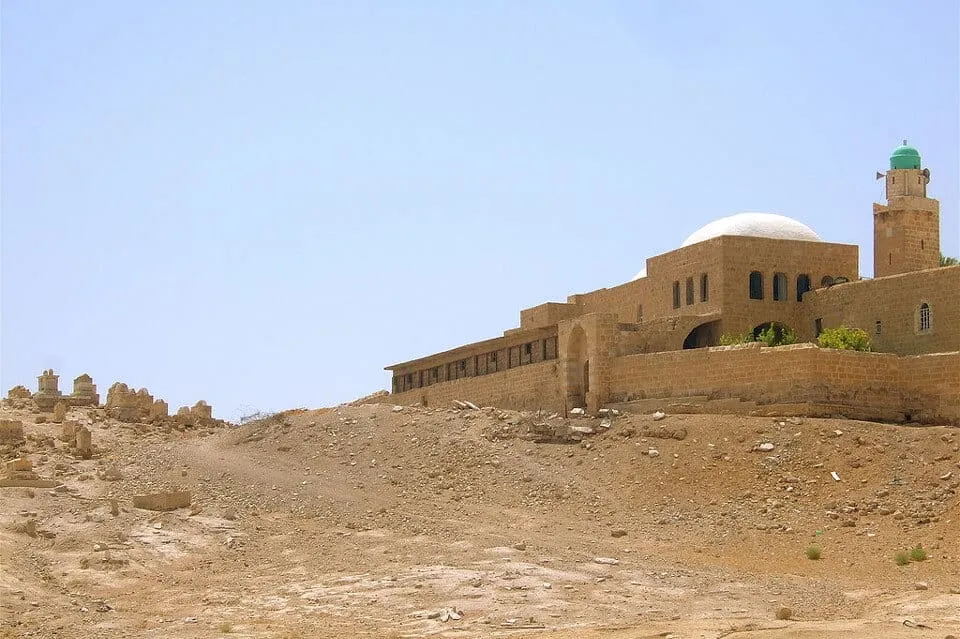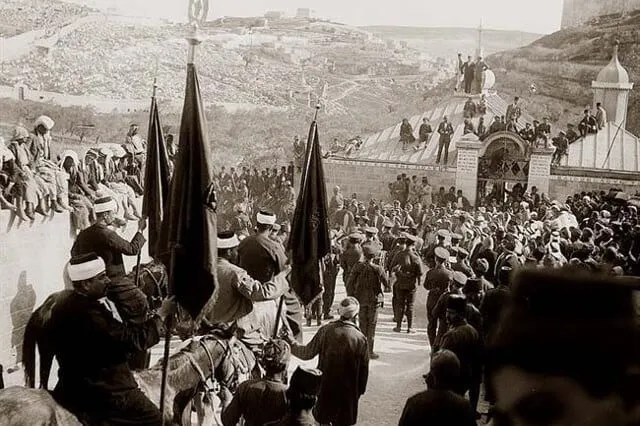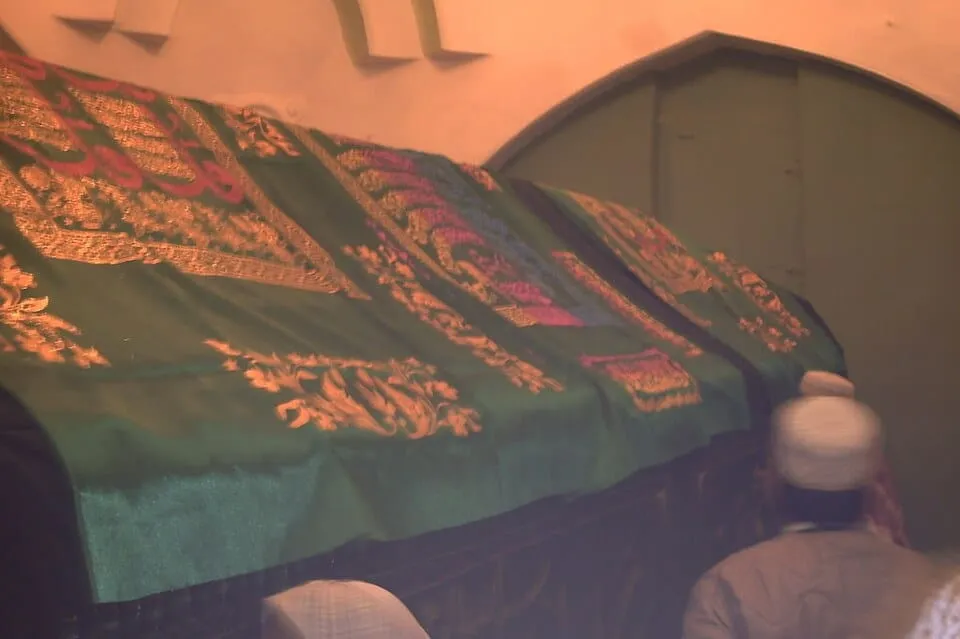Nabi Musa
Musa means Moses in Arabic. Because Nabi Musa is believed as the grave of Moses. The mosque was built in the Middle Ages.

Moses is a prophet who parted and crossed the Red Sea to take Israelites from Egypt to the Sinai peninsula.
Because it is written as below in the old testament, the Jews don’t admit this place is the grave of Moses.
He buried him in Moab, in the valley opposite Beth Peor, but to this day no one knows where his grave is.
Deuteronomy 34:6 Bible Gateway
In Nabi Musa, an annual festival took place during the same period as Christian Easter since the Saladin era.

People parade from Al-Aqsa Mosque in Jerusalem to Nabi Musa, and then they walk back to Jerusalem after five days of the event in Nabi Musa.
History of Navi Musa
1269 CE - Mamluk era
A small mosque was constructed after the Crusades left Palestine.
around 1470
The compound developed a lot; a hospice for the pilgrims and a minaret were added.
around 1820
Under the Ottoman Empire, a restoration proceeded, and the festival became bigger.

around 1920
After WWI, Palestine was put under UK control.
1937
The festival of Nabi Musa was prohibited.
after 1948
After WWII, Jericho was controlled by Jordan first, then Israel. The mosque was used as a military base.
1987
The annual pilgrimage to Nabi Musa was finally re-authorized.
However, the first intifada broke out in December. Israel prohibited the festival again.
1992
Oslo Accords
1997
The festival reopened again.
2000
In September, the second intifada broke out. The festival was prohibited again by Israel.
2007
The festival reopened again.
Information
- 8km southeast from Jericho center
- 8:00 until sunset
- About 50 NIS for a roundtrip from Jericho center; ask the driver to wait for you as there is no public transport.
- Admission free